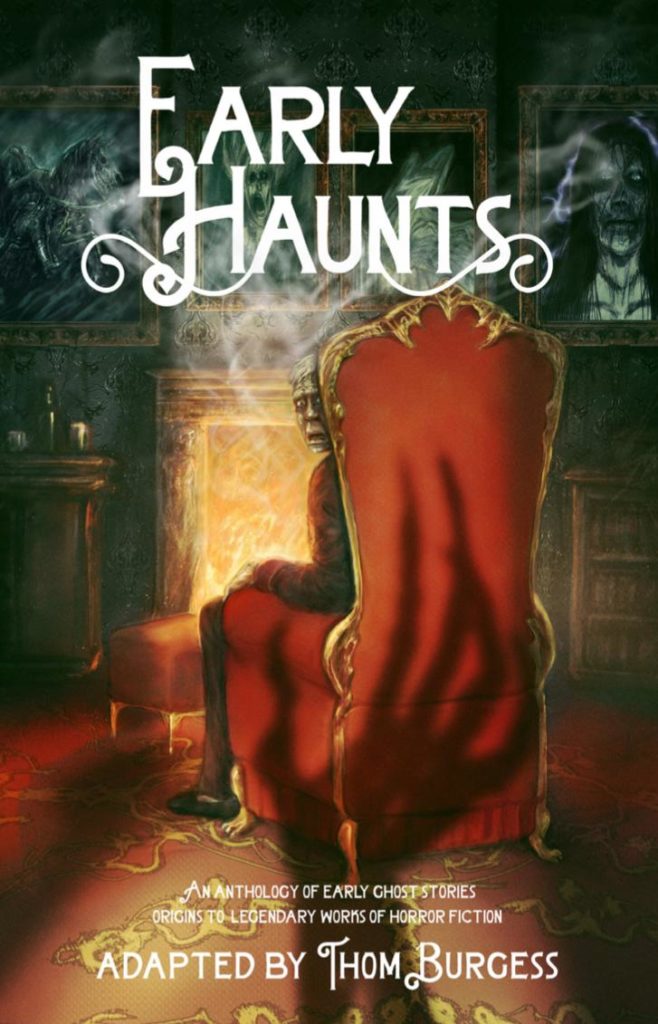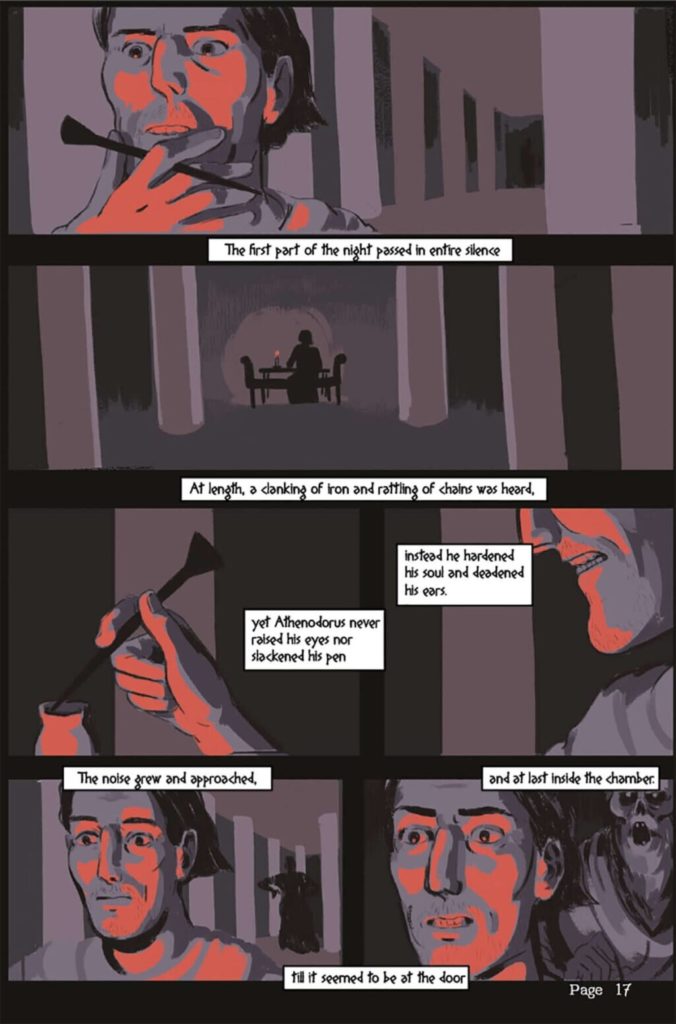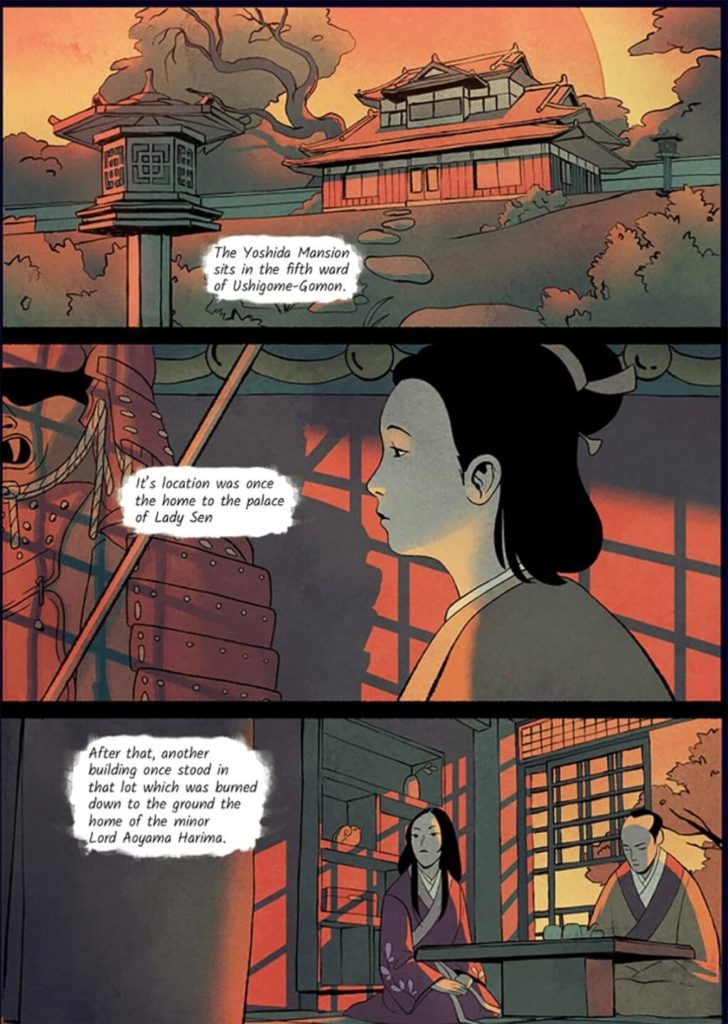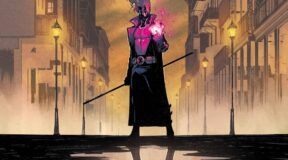
Early Haunts
T.W. Burgess 2020
Written by T.W. Burgess and Baba Bunko
Art by Mike O’Brien, David Romero, Brian Coldrick and Bri Neumann
Colors by Bryan Valenza
Letters by T.W. Burgess
The Rundown: Four stories from around the world showcase a history of hauntings.
The House in Athens
A ghostly specter haunts a mansion in ancient Greece leaving it uninhabited until a philosopher comes to town. Finding out about the spirit, Athenodorus rents the home and begins preparations to investigate and face the spirit. As the staff of the home is sent to the interior, Athenodorus begins to write as the sounds of clanking chains grow closer.

This story has all the hallmarks of a classic ghost story both in its premise and characters. It does a great job of bringing up the primal emotions of fear through both the prose and the great art that is simple, evocative and perfectly matches the tone of the story.
The Death Bride
A marquis goes to visit the home of a friend and arrives just in time to become part of a supernatural mystery. The young marquis is warmly welcomed by his friend and his family, but they are still grieving over the death of one of their twin daughters. As he tries to raise their spirits, their evening is interrupted by the arrival of a Duke seeking the hand of the remaining daughter and the spirit of the castle’s old chaplain haunting the area.
As the marquis watches the Duke court the young woman, he decides to tell a tale at dinner that might serve to give warning to the Duke with the wandering eye. With the wedding still to proceed, the marquis witnesses the aftermath and the return of the Death Bride, but that is not the only twist in the story.
This story has more layers and twists to it and it is made more engaging by the setting and characters. There are some great moments throughout the story and the twist at the end was well done. The art stands out as well for its style, beauty and details.

The Wild Huntsman
The Rheingraf and his fellow hunters head out to hunt some elusive game when he comes across two men on opposite sides of the road. One man discourages him from moving forward while the other encourages him to continue the hunt. The Rheingraf moves on and finds himself in pursuit of a deer. As his men fall by the wayside, he comes upon another who begs him to stop, but the Rheingraf refuses, As they hunting party slips deeper into the woods after their prey, the Rheingraf will discovers that the roles of hunter and prey can be easily transmuted.
There is a familiarity to the story once it gets to the two strangers on the path. While you can see where the story is going as it progresses, it is still satisfying to get to the end and see the Rheingraf’s fate. The art also makes it worth the read for the brilliantly expressive character designs.
The Tale of Dish Mansion
Okiku is the servant in the mansion of a powerful and cruel officer. When she makes a costly mistake, she is severely punished and sentenced to death. Fearing for her life, she manages to escape and throws herself into a well. When she is not found, a ghostly figure begins to haunt the mansion. Terrified of the figure, the officer’s wife gives birth to their first child and the child shows signs of being cursed by Okiku. Unfortunately, the hauntings continue long after the family leaves the house until a monk is dispatched to find a way to appease the spirit.
A really good short story that has some very familiar themes going for it. The art is great as well and perfect for the setting, characters and tone of the story.






